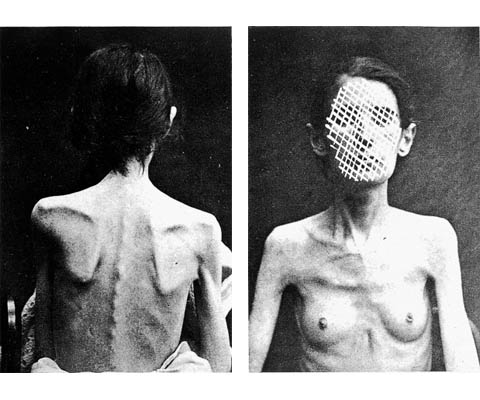Eating Disorders in Young People



This session gives an overview of the nature, aetiology and risk factors linked to eating disorders. Also covered are the diagnostic elements that allow us to distinguish between eating disorders and other conditions affecting the eating behaviour of young people.
Learning Objectives
By the end of this session you will be able to:
- Distinguish between eating disorders and other kinds of eating difficulties
- Discuss the characteristics of common eating disorders
- List risk factors and aetiological issues for eating disorders
This session will describe the range and causes of eating problems seen in adolescents, from normal eating through to life threatening illness.
Understanding the psychological differences between types of eating problems is the starting point for knowing how to address them. The nature of the most common eating disorders will be described in detail.
The causes of eating disorders are complex and no single factor is enough to account for them.
Dasha Nicholls is Consultant Child and Adolescent Psychiatrist and Joint Head of Feeding and Eating Disorders service at Great Ormond Street Hospital. Her clinical work is concerned with aspects of problem feeding and eating disorders in children aged 0-16 years, ranging from failure to thrive to early onset anorexia nervosa, as well as the treatment of childhood obesity. She is actively engaged in research, writing, lecturing and teaching, nationally and internationally.

- Wound Care Education for the Health and Care Workf...
- Posted By eIntegrity Healthcare e-Learning
- Posted Date: 2025-02-21
- Location:Online
- This session builds on the Essentials of the Foot at Risk session to enable Tier 2 level knowledge and skills set out in The National Wound Care Core Capabilities Framework for England. It will introduce you to the 'at-risk foot' and explain how to asse
- Wound Care Education for the Health and Care Workf...
- Posted By eIntegrity Healthcare e-Learning
- Posted Date: 2025-02-21
- Location:Online
- This session aims to educate learners about how to use the Pressure Ulcer Risk Primary or Secondary Evaluation Tool (PURPOSE-T) (© Clinical Trials Research Unit, University of Leeds and Leeds Teaching Hospitals, NHS Trust, 2017) to carry out a pressure
- Wound Care Education for the Health and Care Workf...
- Posted By eIntegrity Healthcare e-Learning
- Posted Date: 2025-02-21
- Location:Online
- This session discusses the impact of nutrition and lifestyle behaviours on wound healing. It highlights common risk factors to healing and their influence on the intricate world of improving skin healing prospects whilst encouraging constructive patient c
- Wound Care Education for the Health and Care Workf...
- Posted By eIntegrity Healthcare e-Learning
- Posted Date: 2025-02-21
- Location:Online
- This session discusses the importance of comprehensive wound assessment. This session will be of benefit to health and care workers, practitioners and carers across any care setting.
- Wound Care Education for the Health and Care Workf...
- Posted By eIntegrity Healthcare e-Learning
- Posted Date: 2025-02-21
- Location:Online
- This session will introduce you to the foot, how to do a foot check and maintain foot hygiene and what to do if you identify any problems or changes. It will help you to build the skills needed to reduce the risk of a person developing foot problems.








